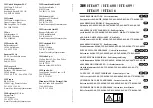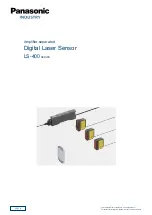
CPE
Customer Premises Equipment. Term used to define telephony equipment that resides on the
customer’s premises.
D bit
The least significant bit of the 24th frame, used in ESF format only, to send signaling information.
D4
A T1 framing type. Also known as D4 framing. A D4 frame is 193 data bits consisting of 192 data
bits (8 bits per channel times 24 channels), and a single framing bit. D4 defines the 12 bit
sequence sent as the 193rd bit in 12 consecutive frames. This framing pattern is 100011011100.
D4 framing also requires that the 8th bit of every byte of every frame be set to 1. This reduces the
rate from 64 Kbps to 56 Kbps (7 bits/frame X 8,000 frames/second).
Delay Dial
Signaling protocol on a T1/E1 channel. Accomplished by a change in the A and B signaling bits
used in Robbed-bit signaling operation.
DID
Direct Inward Dial. A trunk circuit from the Central Office that supplies the last 2, 3, or 4 digits of
the dialed number to the terminating switch, typically a PBX.
DNIS
Dialed Number Identification Service. A feature of 800 and 900 number service where the “dialed
number” is sent to the called party.
DS0
Digital Service, Level 0. The standard definition of a single channel at 64 Kbps using PCM (Pulse
Coded Modulation) used in a T1 circuit.
DS1
Digital Service, Level 1. A signal stream comprised of 24 channels and one framing bit running at
8 kHz per frame (193 bits X 8,000 = 1,544,000 bps), the standard North American T1 rate.
DSU
Data Service Unit or Digital Service Unit
E & M
An interface circuit that uses two separate control leads for signaling, the E lead and the M lead.
Signaling is performed using Battery and Ground in analog trunk circuits. A digital connection like
T1 uses the A & B leads for control. There are variations of E & M circuits, called Types, such as
Type I, Type II, etc.
E1
A digital data stream defined as 30 independent channels processed simultaneously over two
wire pairs at an aggregate speed of 2,048,000 bits per second. Defined by CCITT/ITU, it consists
of 30 voice channels, one signaling channel, and one framing channel.
ESF
A T1 framing type. Extended Super Frame, a T1 framing standard that is defined as 24 frames
grouped together. The 8,000bps frame is broken into 3 segments, 2,000bps for framing and
signaling, 2,000bps for CRC-6 error detection, and 4,000bps for a data link.
FAS
An E1 signaling option. Frame Alignment Sequence - A bit sequence used to ensure that
receivers maintain synchronization of incoming physical layer frames. This is used for Clear
Channel operation only.
Telecom Simulation Platform
Page 74













































